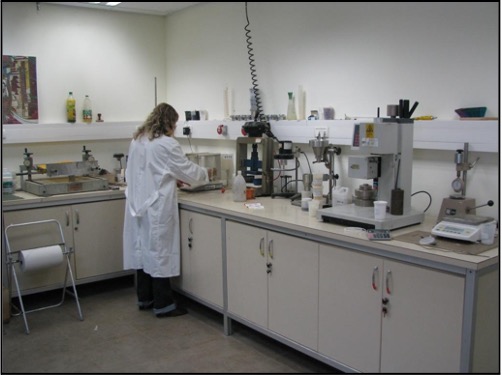
Technical textiles are versatile with widespread applications. For a product to perform optimally in its application, the manufacturer must carefully consider the technical factors required of the coated fabric in the research and development phase. Performance testing helps determine the specification that best suits your project.
This article provides an overview of five performance factors to measure, through performance testing, to ensure suitability for your application.
Chemical resistance
Chemical resistance testing shows how well a polymer can resist exposure to certain chemicals. When testing chemical resistance, it is also important to know the temperature, high or low, of the exposure. Just because a polymer performs well exposed to a chemical at room temperature does not mean it will do as well at higher temperatures. When designing for a project, it is critical to know these factors and discuss with the producer of the technical textile.
UV resistance
UV testing is done to help determine how long a material will last exposed to the sun. Using accelerated UV resistance testing equipment like XENON Arc or QUV can show how well a polymer will do after being exposed outdoors. Some of the testing equipment can also simulate moisture exposure and heat exposure. Testing will be typically reported in exposure hours or watts of the exposure until surface cracking occurs. Like chemical resistance testing heat exposure can be a significant factor in testing and needs to be considered when designing test parameters. These results are then correlated to estimate years of exposure. Options include thermoplastic polyurethane (TPU), linear low-density polyethylene (LLDPE), polyvinyl chloride (PVC), ethylene interpolymer alloy (EIA). This depends greatly on additives and chemistry used. There are expensive aliphatic TPUs that will do better than EIA and PVC.
Cold resistance
In many cases, lower temperatures near or below the freezing point have a significant effect on the mechanical properties of the textile. The material can become brittle or shrink in subzero temperatures. Testing the cold resistance helps in determining the operational temperature range of the material. Depending on the application, the designers may select something that works exclusively in the cold or something dynamic that delivers consistent performance over a wide temperature range.
Abrasion resistance
Abrasion from multiple sources is a common issue in several technical textile applications. From solid material suspended in water to the small air particles in the open environment, consistent exposure to harsh environmental factors can potentially damage a product.
The abrasion resistance is a deciding factor in many industrial applications where the textile is susceptible to damage from numerous sources. In such harsh conditions, something durable with the capability to sustain damage from abrasions and impacts is more likely to be successful.
Flame retardancy
Flame tests show how fast a flame will spread across a technical textile. Testing varies greatly and certain tests can be more extreme than others. Certain tests are performed vertically and others horizontally. Some are done with wind and some in ambient static conditions. Note vertical tests are more extreme than horizontal testing, and testing done in a wind tunnel is much more extreme than state tests. Test results can be shown by the spread of the flame, and it takes time to extinguish. A measurement is recorded to show how far the flame spreads after it is extinguished. The time needed to extinguish is how long the material takes to self-extinguish if it extinguishes. Extensive flame testing is done in construction, marine and aviation markets. Additives are used in all polymers to improve this characteristic.
This article first appeared on the e2 Technical Textiles blog, https://e2techtextiles.com/blog.
 TEXTILES.ORG
TEXTILES.ORG


